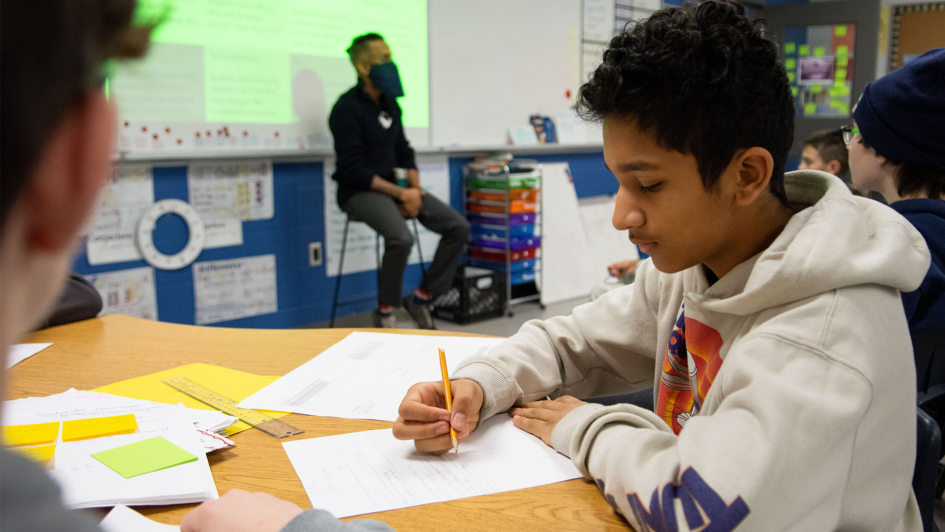
January 4th, 2023
Grade 7 students at Groh PS in Jen Schaefer and Jes Neilson’s classes recently had the opportunity to interview jeewan chanicka, director of education for the Waterloo Region District School Board (WRDSB). This wasn’t for a school newspaper article, though, as they’re working through the empathy stage of a design thinking project with the aim of improving experiences for newcomers to Canada and our community.
Schaefer explained that in the empathy stage of design thinking, students are building a greater understanding of the issue they are working to address, from the perspective of those who live it. From here, they will work to ideate potential achievable solutions that could be implemented right here in Waterloo Region.
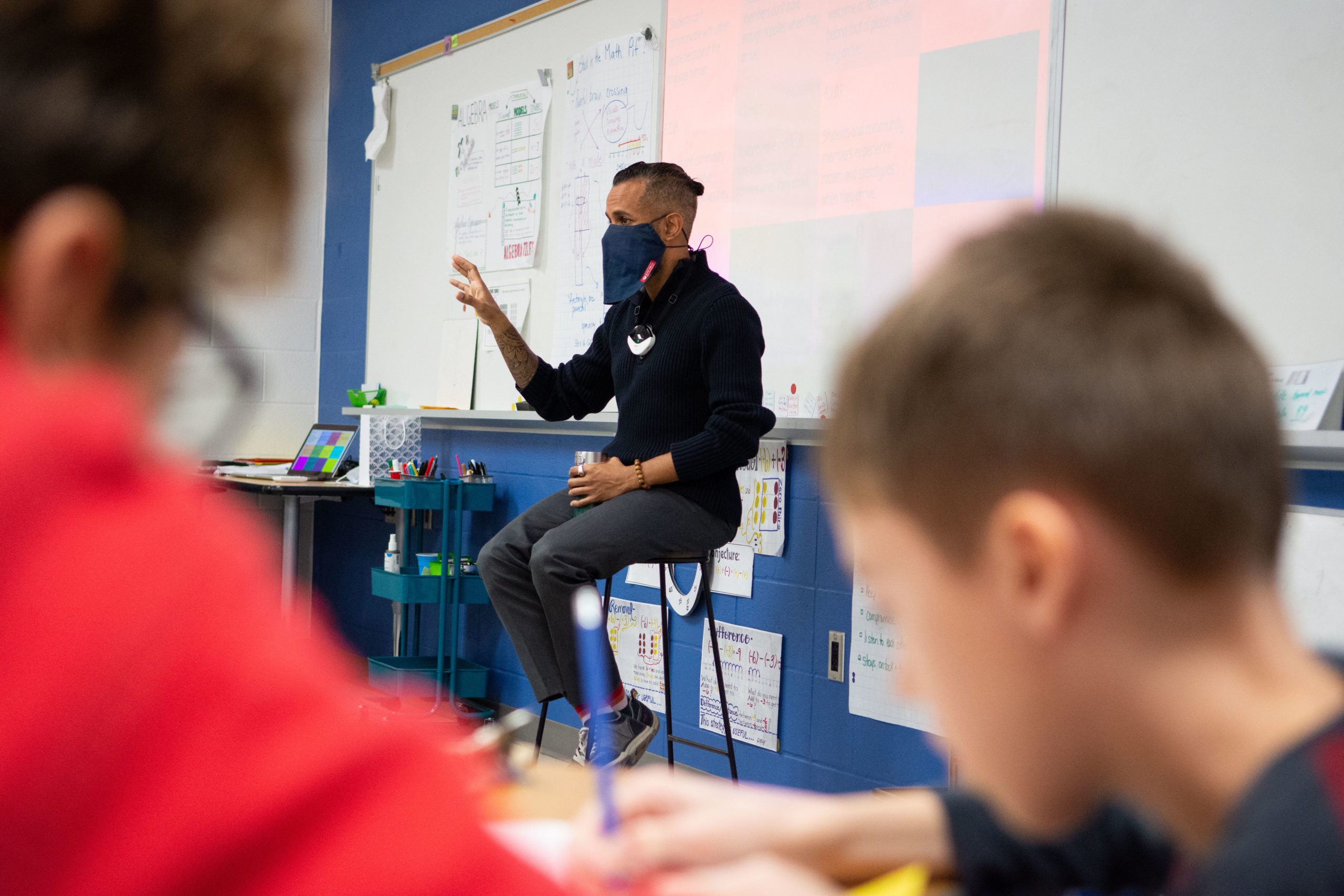
chanicka spoke about his experience as a newcomer when he moved to Egypt to continue his education in his 20s. The students diligently took notes, categorizing new information to help guide them to a potential plan to create more positive experiences for newcomers.
“You’re trying to learn a new language,” on top of everything else you need to do in daily life, said chanicka. “It can be a really scary experience to move somewhere new. But, they also bring amazing skills because of all they have to do and learn on top of what they are learning in school.”
The work these students are doing to support newcomers echoes what chanicka heard during the consultation portion of the WRDSB’s strategic planning process, he explained.
“What I heard resoundingly from the students’ voices is that we need to make schools more inclusive. We need to make sure everyone belongs,” said chanicka. “Those were things I heard over, and over, and over.”
He shared that parents, caregivers and staff echoed the same sentiments.
These Grade 7 students are interviewing a number of important community members in an effort to better understand the experiences of newcomers, and how their experiences can be improved. chanicka commended the students’ efforts and explained why he feels this stage is so important.
“Even though we share the same world, we don’t share the same experiences of the world,” said chanicka. “The things we have to think about might be different because of who we are and how we live in the world.”
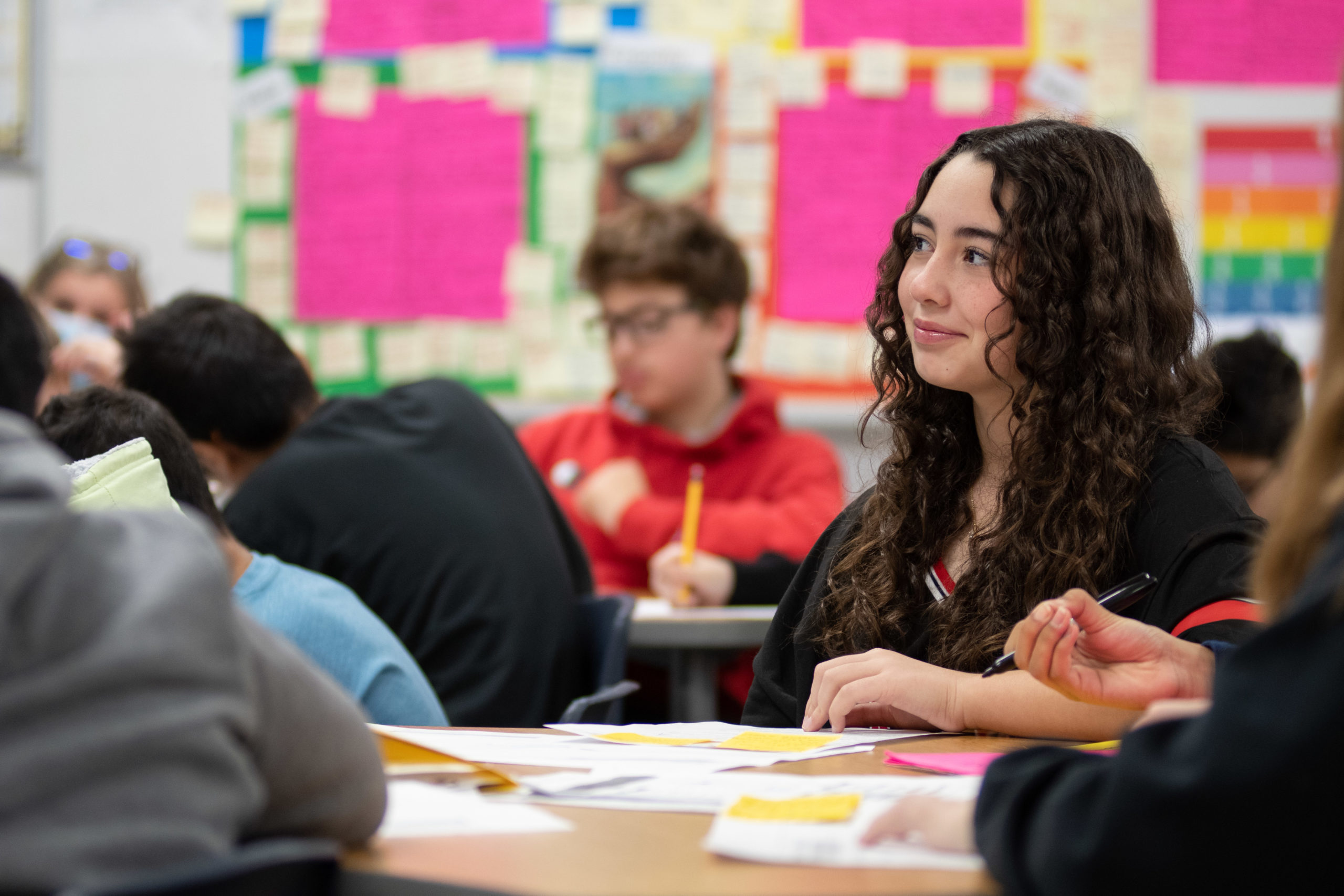
Azra Topkaya is one of the students that invited chanicka to speak with the class. She shared her appreciation of being able to add chanicka to the list of community members they’ve spoken with to learn more about improving the experiences of newcomers. Students also spoke with:
- Deepa Ahluwalia, Human Rights and Equity Advisor in the WRDSB
- Kimiko Shibata, Multilingual Language Learner (MLL) Resource Teacher in the WRDSB
- Mohammed Saeed, Youth Support Facilitator at Reception House
- Yujin Chung, Practicum student from the Kitchener-Waterloo Multicultural Centre
- Parents and caregivers who are newcomers
“It was nice to have jeewan chanicka come and let us interview him,” said Topkaya. “It’s a big part of our design thinking project.”
Topkaya shared what she learned from chanicka about the importance of having others to support you through difficult times in your life. She saw a clear connection to what chanicka shared about what he needed during the period when he was homeless.
“He needed people who helped him,” said Topkaya.
None of this is new to Topkaya, though, who knows what it’s like to need the support of others.
“As a newcomer, I know how it feels,” said Topkaya. “You don’t know anyone, if you don’t have family or friends here it’s a lot of stress.”
Topkaya, who moved to Canada from Turkey, shared how significant the language barrier can be, especially for parents or caregivers who might be navigating how to support their children in school.
“That can be sometimes very challenging as a parent, because there’s so much stuff you have to do for your children,” said Topkaya.
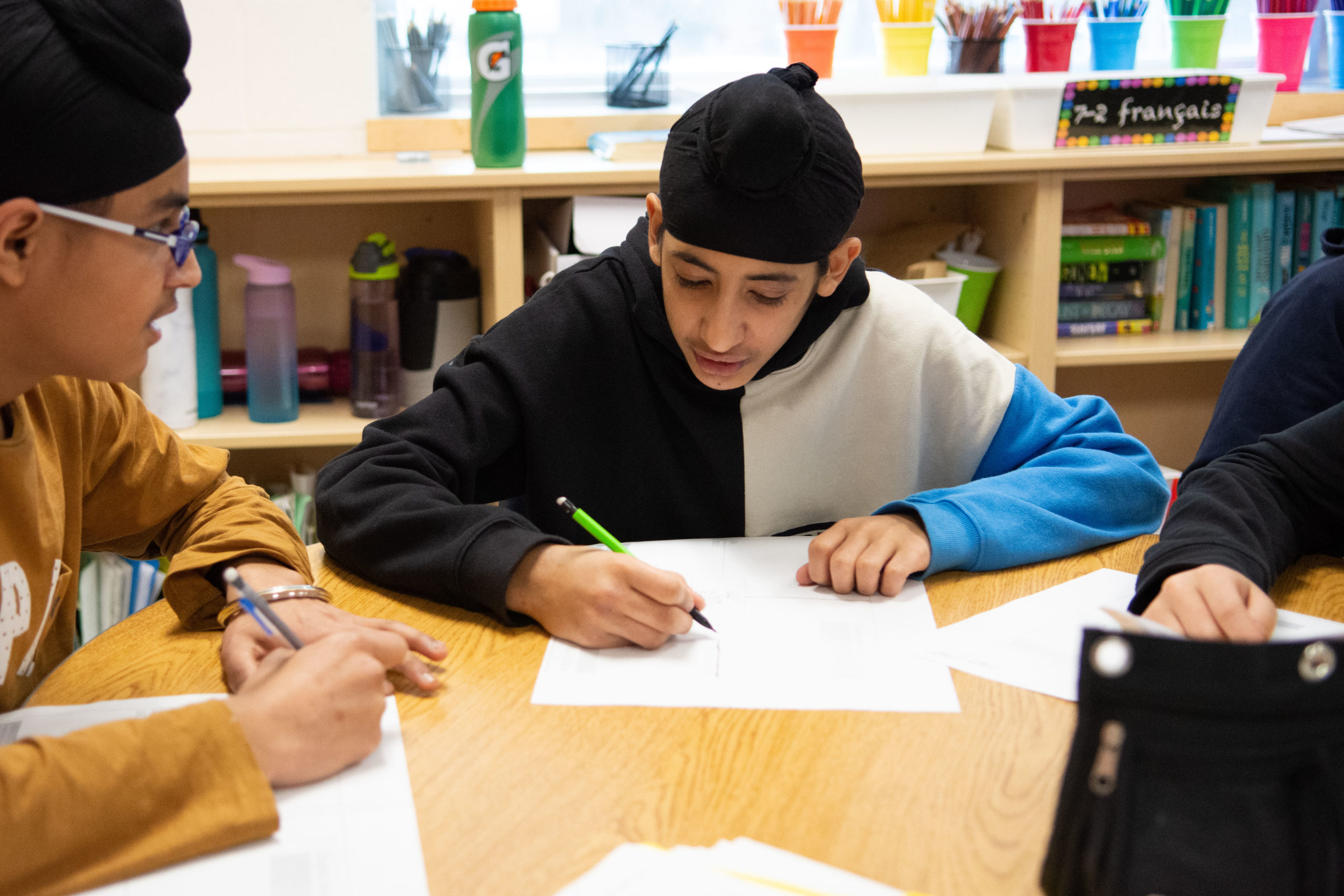
Vansh Mankotia was another of the students who made the first connection with chanicka. He reflected on how the details that chanicka shared about his lived experience as a newcomer will assist them in proposing solutions to the problems.
“It fits perfectly,” said Mankotia. “We’re hoping to learn what causes struggles for newcomers, and how we can make it easier for them.”
Mankotia has a personal connection to this work, too, as he is also a newcomer to Canada. He is finding this design thinking project especially rewarding, knowing the impact their critical thinking and problem-solving can have on those around them.
“It feels good, because I’m helping the community, possibly changing the world,” said Mankotia.
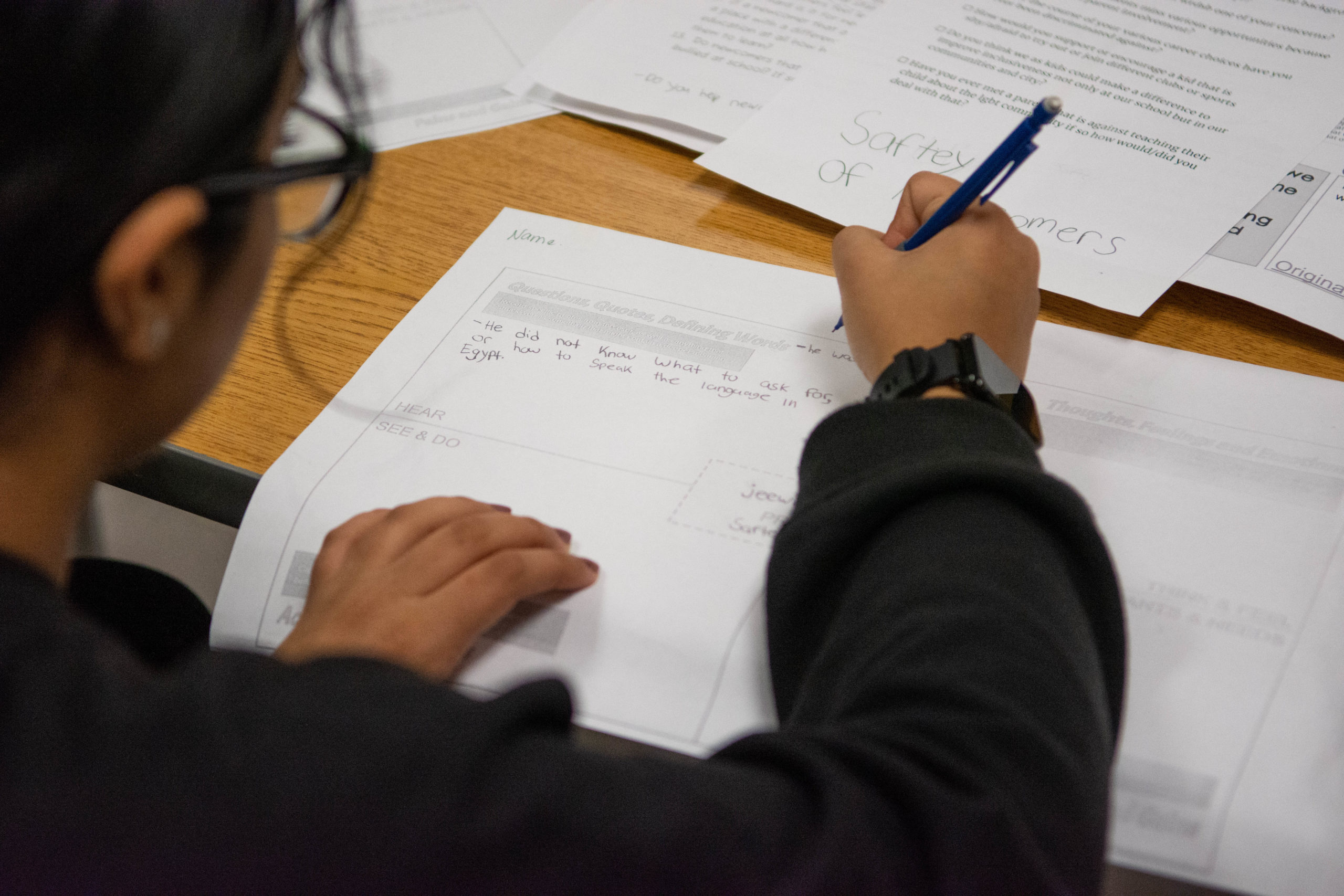
For Schaefer and Neilson, as teachers, this is exactly the kind of feeling they aim to inspire in their students. When they create opportunities for students in their classroom, they know they’ll see them rise to and exceed high expectations.
“I think they’ve surprised themselves,” said Schaefer. “Never underestimate what students are able to do when you give them a platform to do it.”
All throughout this design thinking project, students are building skills and knowledge that will support them on whatever their chosen pathway may be in learning and in life.
“It’s developing those 22nd century skills,” said Neilson. “Collaboration, communication, and building teamwork.”
“These are the classroom learning opportunities that will allow students to understand how their learning can transform the world into a better place,” added chanicka. “This must be the work of public education.”
The end goal? To see the solutions these students come up with put into motion, whether it’s at Groh PS or within the broader community. Students will have a chance to make this happen towards the end of the school year, when their class joins the secondary students taking part in the Global Innovation Management Institute’s (GIMI) Impact Program in pitching to Smart Waterloo Region (SWR).
“The plan is we will take our students to pitch their ideas, and I think that is meaningful to them, because they know their ideas are being heard,” said Neilson. “It’s all driven by student voice.”
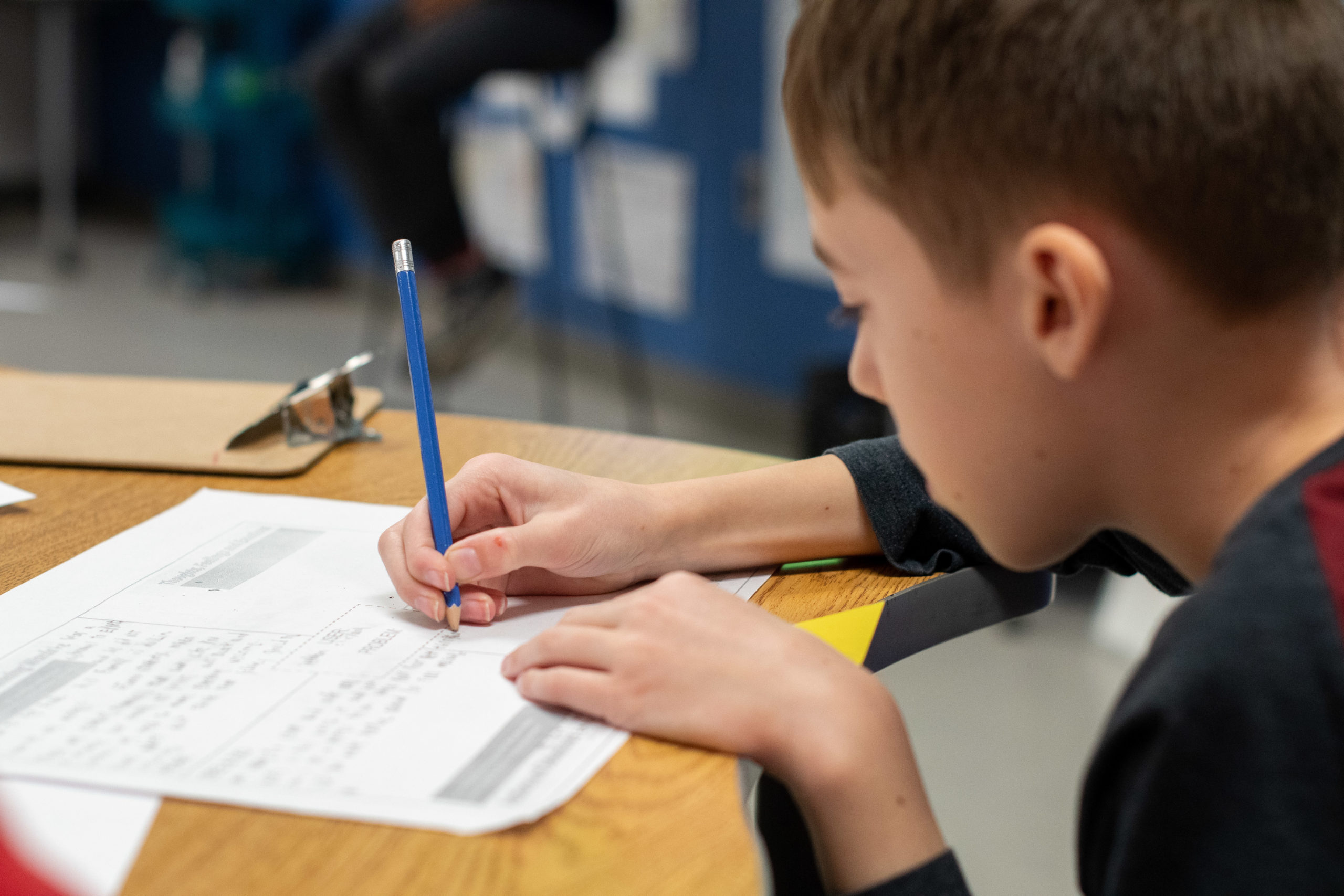
This all gets at the core of what brought Schaefer and Neilson to teaching in the first place, and what has kept their passion for student engagement and innovation burning: the limitless outlook that students bring to learning every day.
“It’s why we’ve never left the classroom,” said Schaefer.
“This is where the magic happens,” added Neilson.
Categories: Feature Tags: Design Thinking · Groh Public School · innovation · learning · Newcomers · students

